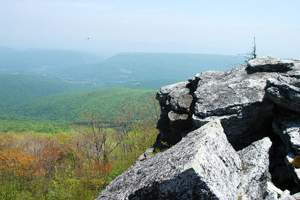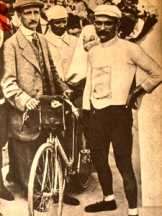 For many years on July evenings after having completed another ordinary workday, I’ve been glued to my television watching the daily replays of that day’s leg of the Tour de France.
For many years on July evenings after having completed another ordinary workday, I’ve been glued to my television watching the daily replays of that day’s leg of the Tour de France.
Momentarily putting aside all questions related to the use of performance enhancing chemicals, banned or otherwise, the Tour is a test of human endurance unlike any other. I’ve always admired marathon runners, but imagine running a marathon, getting up the next day, going out running another one, and then repeating this regime for three consecutive weeks with only two or three days off to rest and recover.
Give me a second! I’ve got to catch my breath.
Back in the 80’s, I used to be an avid recreational cyclist; black spandex and all. Some friends of mine who happened to catch glimpses of me as I streaked through town, still haven’t recovered. I got in to cycling after a chronic hip injury made it difficult for me to continue jogging for exercise.
At the time, we were living in the mountains of western North Carolina. One of my favorite routes to ride was a 20 or so mile loop which took me on a winding road which snaked up a small mountain topped with a precipitous cliff known locally as Jump Off Rock.

Legend has it that Jump Off Rock was so named in remembrance of the young Cherokee Indian maiden who leapt to her demise over the cliff upon learning that her beloved had been killed in battle.
It’s interesting to note that in my travels to other states, I’ve come across several other so named Jump Off Rocks. Apparently angst-ridden teenaged Indian maidens hurling themselves over the nearest available cliff reached epidemic proportions in pre-Colonial America.
One afternoon after riding to the top of Jump Off Rock, I sat in the shade resting with my bike laying in the grass at my feet. I noticed that there was a very elderly gentleman taking in the view of the valley from the overlook above the cliff. He turned slowly and noticing me, he began hobbling with the use of his cane over to where I sat in the grass. He was 90 years old, if he was a day. He looked like Methuselah.
After a few moments of closely examining my bike, he began poking at the derailleur on the rear hub with his cane. With a deep German accent and in broken English the old man excitedly asked, “What’s this? What’s this? ”
“Those are the bike’s gears. Makes it easier to climb hills.” I replied hoping that the explanation would cause him to stop pummeling my derailleur with his staff.
“Huh! When I was a young man, I rode my bicycle from Heidelberg to Barcelona! Over the Alps and up the Pyrenees! One gear! ONE GEAR! ” he bellowed flailing the air wildly with his cane.
Hoping that my leaving might allow the elderly German to calm himself and thus avoid a coronary, I hopped on my bike and began the glide down the mountain troubled by having just been completely humbled by a 90+ year old Bavarian.

Leading up to this year’s Tour, NBC Sports aired a documentary on the history of the Tour de France. As old black and white photographs from the inaugural 1903 race scrolled across the screen, the narrator intoned that the bikes used in that era had, you guessed it, only one gear!
Hah! I thought to myself. I could still have taken that guy in a 50 yard dash!
Auf Wiedersehen!
OM
Photo credit: hans905 / Foter.com / CC BY-NC-SA
Photo credit: D.Clow – Maryland / Foter.com / CC BY-NC-ND
Photo credit: bilobicles bag / Foter.com / CC BY-NC


![Tomato-Sam'ich-[McCorkle]-002](https://opinionatedmiscellany.wordpress.com/wp-content/uploads/2013/06/tomato-samich-mccorkle-002.jpg?w=869)
![Tomato-Sam'ich-[McCorkle]-001](https://opinionatedmiscellany.wordpress.com/wp-content/uploads/2013/06/tomato-samich-mccorkle-001.jpg?w=869)

